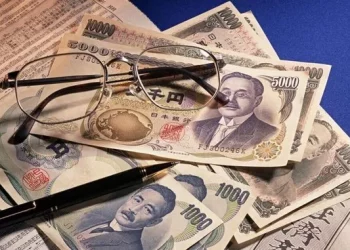The world of foreign exchange (forex) is vast, offering a wide array of opportunities and challenges for investors and traders alike. One of the fundamental elements in forex trading is understanding how currency exchange rates fluctuate and how to convert one currency into another. For anyone looking to exchange U.S. dollars (USD) for Australian dollars (AUD), it’s essential to grasp the concept of exchange rates, the factors influencing these rates, and how to determine the value of $49 USD in AUD.
What is an Exchange Rate?
At the most basic level, the exchange rate refers to the value of one currency relative to another. The exchange rate tells you how much of a foreign currency you will get in exchange for a certain amount of your domestic currency. For example, if the exchange rate between the USD and AUD is 1 USD = 1.50 AUD, it means that for every U.S. dollar, you will receive 1.50 Australian dollars.
Exchange rates are dynamic and fluctuate constantly due to various factors. These fluctuations can be significant, especially for traders or investors who are involved in the forex market. Understanding these rates is crucial for anyone looking to convert their currency from USD to AUD or vice versa.
The Role of the Forex Market in Exchange Rates
The foreign exchange market is the global marketplace where currencies are traded. It operates 24 hours a day, five days a week, and is the largest and most liquid financial market in the world. The forex market facilitates the exchange of currencies between banks, financial institutions, governments, corporations, and individual traders.
In the forex market, exchange rates are determined by the supply and demand for various currencies. If demand for a particular currency is high, its value relative to other currencies will rise. Conversely, if demand is low, its value will decrease.
The USD to AUD exchange rate, like all exchange rates, is subject to fluctuations based on economic indicators, market sentiment, geopolitical events, and monetary policy decisions made by central banks.
How to Convert $49 USD to AUD
To determine how much $49 USD is worth in AUD, you need to know the current exchange rate between the two currencies. Exchange rates fluctuate constantly, so the value of your dollars in AUD can vary from day to day.
For example, if the exchange rate is 1 USD = 1.50 AUD, converting $49 USD would result in:
49 USD×1.50 AUD/USD=73.50 AUD
This means that $49 USD would be equivalent to 73.50 AUD at that particular exchange rate. It’s important to note that the actual amount you receive might differ slightly, as financial institutions often charge a small fee for currency conversion or may offer a different exchange rate than the market rate.
Factors Influencing the USD to AUD Exchange Rate
The exchange rate between the U.S. dollar and the Australian dollar is influenced by a range of economic and geopolitical factors. Understanding these factors can provide insights into why exchange rates fluctuate and help you predict trends in the forex market.
1. Interest Rates
Interest rates set by central banks, such as the U.S. Federal Reserve and the Reserve Bank of Australia (RBA), play a crucial role in determining currency values. Higher interest rates tend to attract foreign investment, increasing demand for the currency and thus strengthening it. Conversely, lower interest rates can make a currency less attractive to investors, causing its value to fall.
For example, if the RBA raises interest rates, the Australian dollar may appreciate because investors would be attracted to higher yields. Similarly, if the U.S. Federal Reserve raises rates, the USD may strengthen against the AUD.
2. Economic Indicators
Economic indicators such as GDP growth, employment data, inflation, and trade balances have a significant impact on currency values. If the U.S. economy is performing better than the Australian economy, the USD may appreciate relative to the AUD. Conversely, if Australia experiences strong economic growth or positive economic data, the AUD could strengthen.
3. Commodity Prices
Australia is a major exporter of commodities, including minerals, oil, and agricultural products. As a result, the Australian dollar is often influenced by global commodity prices. When commodity prices rise, Australia’s economy benefits, and the AUD tends to appreciate. Conversely, when commodity prices fall, the AUD may weaken.
4. Political Stability and Geopolitical Events
Political stability plays a significant role in the strength of a country’s currency. If a country is experiencing political uncertainty, its currency may weaken as investors seek safer assets. Similarly, geopolitical events such as trade wars, conflicts, or natural disasters can lead to volatility in currency markets.
For instance, a shift in U.S. government policies or political instability in the U.S. can lead to changes in the value of the USD. Similarly, changes in Australia’s political landscape can impact the AUD.
5. Market Sentiment and Speculation
Forex traders often base their decisions on market sentiment and speculation about future events. If traders believe that the USD will strengthen against the AUD, they may buy USD and sell AUD, causing the exchange rate to shift in favor of the USD. Conversely, if traders believe the AUD will outperform the USD, they may take positions that drive up the value of the AUD.
Market sentiment can be influenced by global economic events, news releases, or forecasts, and traders react quickly to these developments, which can cause short-term fluctuations in the exchange rate.
Why Do Exchange Rates Fluctuate?
The value of the USD relative to the AUD can change from moment to moment due to supply and demand dynamics in the forex market. These fluctuations are often the result of multiple factors, including economic data, market sentiment, and geopolitical events. Additionally, short-term fluctuations can also occur based on speculation and trading strategies employed by traders.
For example, if a major economic report comes out showing that the U.S. economy is stronger than expected, this could lead to an increase in demand for USD, causing the exchange rate to rise. On the other hand, if a political crisis in Australia causes uncertainty, the AUD may weaken relative to the USD.
Traders and investors who monitor these fluctuations can take advantage of changes in the exchange rate by buying or selling currencies. This is why forex trading can be both lucrative and risky, as the value of currencies can change rapidly.
How to Track the USD to AUD Exchange Rate
To track the current exchange rate between USD and AUD, you can use a variety of resources:
Forex Platforms – Many online forex platforms provide real-time exchange rate information for currency pairs, including USD/AUD.
Financial News Websites – Websites like Bloomberg, Reuters, and CNBC offer up-to-date information on currency exchange rates.
Currency Converter Tools – Many websites and mobile apps offer currency converter tools that allow you to calculate the value of USD in AUD based on the latest exchange rate.
Bank or Currency Exchange Providers – If you plan to exchange currency physically, you can visit your bank or a currency exchange provider to inquire about the rate.
How Currency Conversion Fees Affect the Final Amount
When you exchange USD for AUD, you will likely encounter a conversion fee. This fee can vary depending on where you exchange your currency. Some banks and exchange providers charge a flat fee for currency conversion, while others charge a percentage of the total amount being exchanged.
In addition to conversion fees, financial institutions may offer slightly different exchange rates than those available in the forex market. This is because banks and currency exchange providers need to make a profit on each transaction, so they may offer you a less favorable rate than the market rate.
For instance, if you are exchanging $49 USD at a rate of 1 USD = 1.50 AUD, you might only receive 72.00 AUD after conversion fees and a slightly less favorable exchange rate. Therefore, it is always a good idea to shop around for the best rate before making a currency exchange.
Conclusion
To summarize, the value of $49 USD in Australian dollars is not fixed and can vary based on the current exchange rate between the two currencies. Understanding the factors that influence exchange rates, such as interest rates, economic indicators, and market sentiment, can help you make more informed decisions when converting currencies. Furthermore, it’s important to keep in mind that currency conversion fees and exchange rate margins offered by financial institutions can affect the amount of AUD you receive.
Whether you’re a traveler, investor, or forex trader, staying informed about currency fluctuations and understanding how exchange rates work is essential for maximizing your returns or ensuring you get the best deal when converting currencies.
In the world of forex trading, knowledge is power. By continuously monitoring the factors that influence exchange rates and understanding how to convert currencies effectively, you can navigate the forex market with confidence and make more strategic decisions when converting U.S. dollars to Australian dollars or any other currency pair.
Related Topics:



























